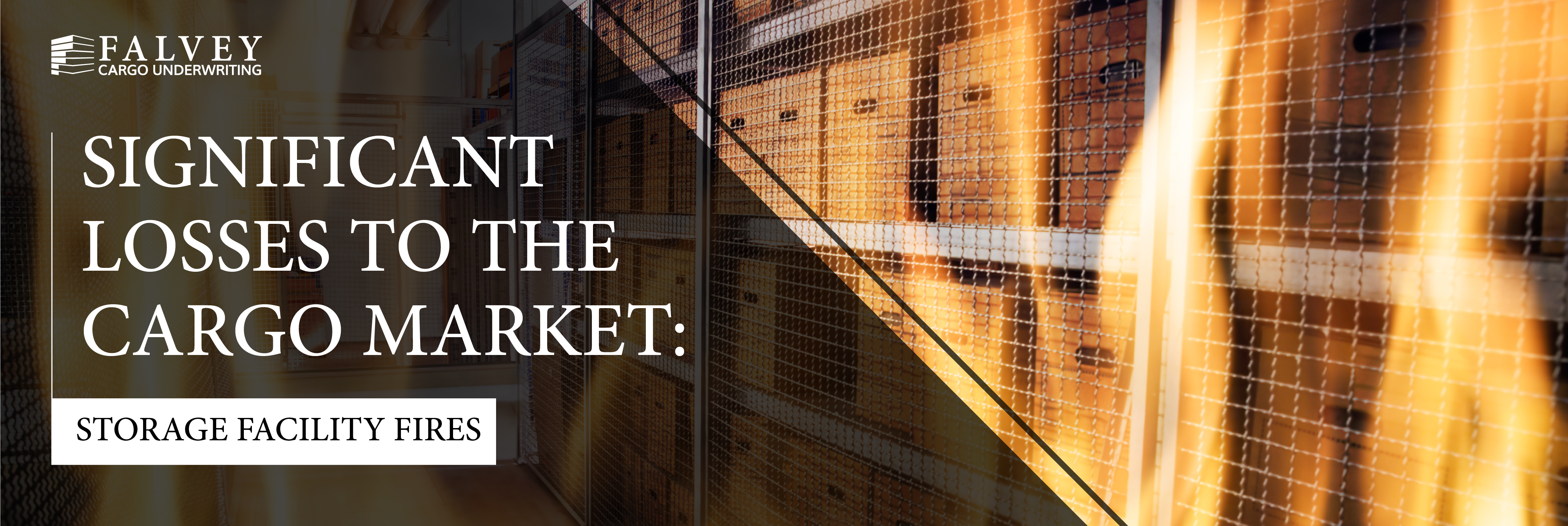Continuing our series of reports on the major losses impacting the cargo market, this article focuses on the most basic element of insurance coverage—fire—and a swath of large warehouse fires that have resulted in the market’s increased attention on locations with large single stretch limits, adequate fire protection underwriting, and changed the way the market underwrites and charges for this capacity.
The following losses also illustrate that fires can result in a variety of claims, not only for property damage, but for workers compensation, environmental damage, and more.
(See previous article on losses resulting from the Tennessee Tornadoes.)
Amazon (Redlands, CA):
In the early morning hours of June 5, 2020, a three-alarm fire was reported at an Amazon distribution center in the Redlands. The warehouse stores very large items and is operated by Kuehne and Nagel, one of Amazon’s 3PL vendors.
Within a half hour, part of the building collapsed and several trucks parked outside the facility also caught fire. Firefighters were able to bring the blaze under control by late morning, but remained on the scene dousing hot spots. While about 40 employees were working inside the warehouse, no one was injured. The cause of the fire is undetermined.
Jim Beam (Versailles, KY):
On June 30, 2020, a barrel house at a Jim Beam aging facility in Kentucky caught fire and spread to another warehouse. The fire blazed for three days—firefighters contained the flames as bourbon barrels were purposely allowed to burn off to avoid further polluting a nearby creek, the Kentucky River, and sources of drinking water with run-off. Jim Beam hired an environmental crew to mitigate the damage, which included installing aeration devices in waterways and taking daily water samples. The warehouse where the fire started collapsed, destroying 45,000 barrels whiskey. No one was hurt and the cause of the fire has not been determined, but could potentially have been caused by a lightning strike.
Tyson Foods (Nashville, AR & Holcomb, KS)
On August 9, 2019, a large fire started at a Tyson Foods beef harvest facility in Kansas. The fire caused significant damage and collapsed the roof, but all of the plant’s 3,800 workers were safely evacuated without sustaining any injuries. The plant, which processes around 5,000 head of cattle per day, was forced to close operations until December.
One year later, on July 9, 2020, another large fire broke out in the boiler room of a Tyson Foods chicken plant in Arkansas. The blaze was extinguished by firefighters within two hours, but two employees were injured when the facility exploded. The boiler room is a detached building, so the fire did not reach the main plant buildings.
Macy’s (Martinsburg, WV):
On November 25, 2019, a fire burned through a Macy’s warehouse in West Virginia. About 1,000 employees were safely evacuated, and the sprinkler system and firefighters helped contain the blaze to the building. Yet a large amount of high-value goods was lost due to water or fire damage as the retailer had stocked up for the Christmas season. It was estimated that the cargo market paid out at least $100 million in losses.
Takeaways For the Cargo Market
Underwriting a warehouse facility requires diligence and a comprehensive understanding of all exposures and potential risk factors to ensure there are proper and adequate controls, systems, and procedures in place. While warehouses of all types have the potential to cause major losses, the health and well-being of the people that work in these facilities is paramount and thus requires strict compliance with all applicable Life and Fire Safety regulations.
In strictly considering the overall risk to inventory stored within a facility, such as is addressed by a cargo stock throughput policy, it is essential that the insured consider critical risk elements such as building age and construction, interior layout, occupancy/commodity classification, storage arrangement, fire protection systems (public and private), security, common and natural hazards and surrounding exposures to the facility. Specific to fire safety and prevention, insurers must ensure that sprinkler systems are adequately designed based on the occupancy hazard and storage arrangement within the facility, available water supply and extent of hazmat stored within the facility. In addition, insurers must consider overall operations within the facility and evaluate overall attitude and awareness of management towards fire safety and loss prevention.
Keep an eye on our News page for the next article in our series on significant losses to the cargo market, or follow us on LinkedIn.




